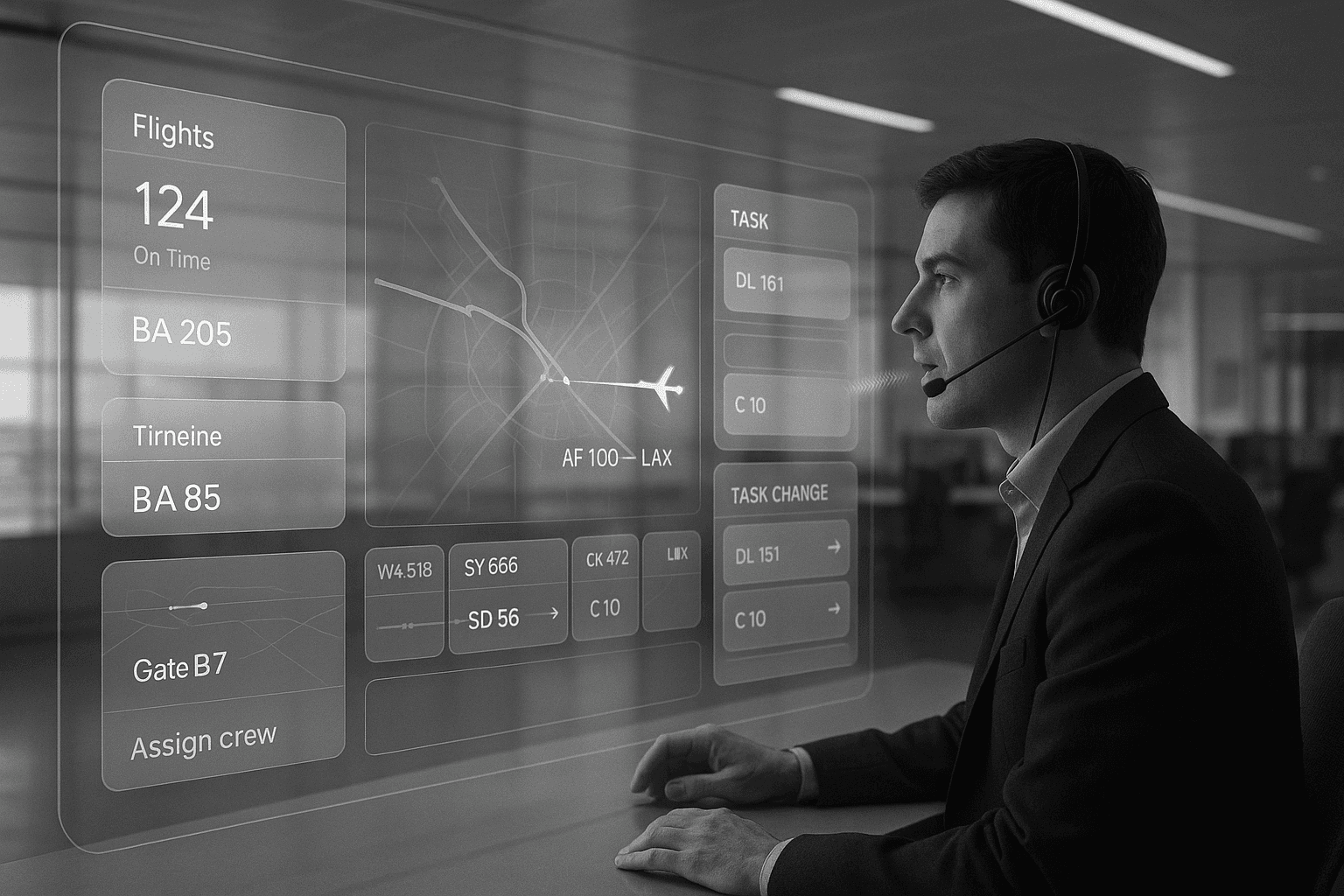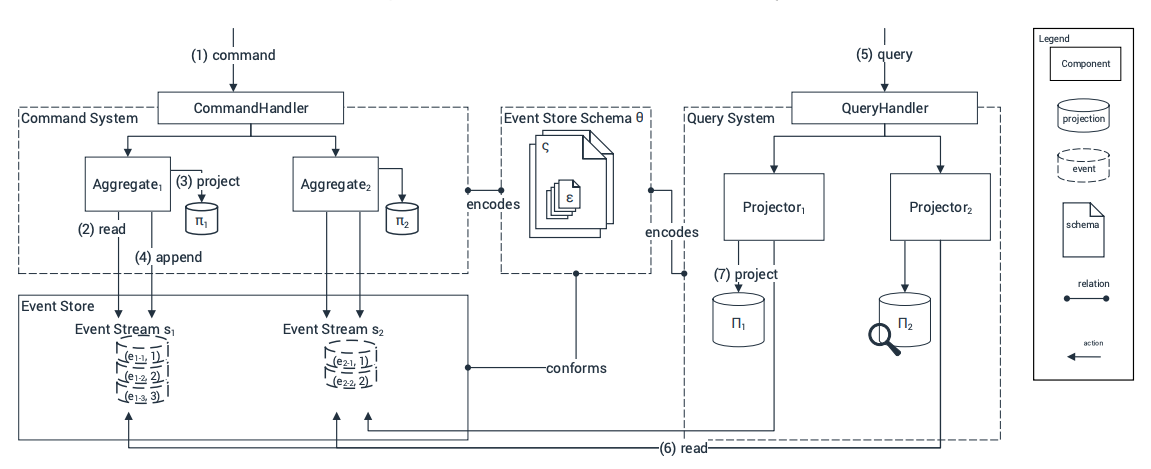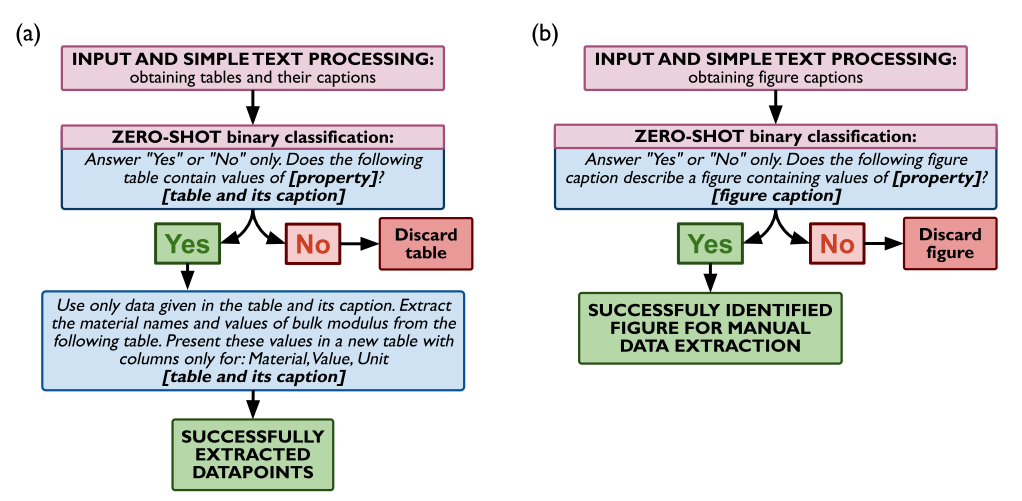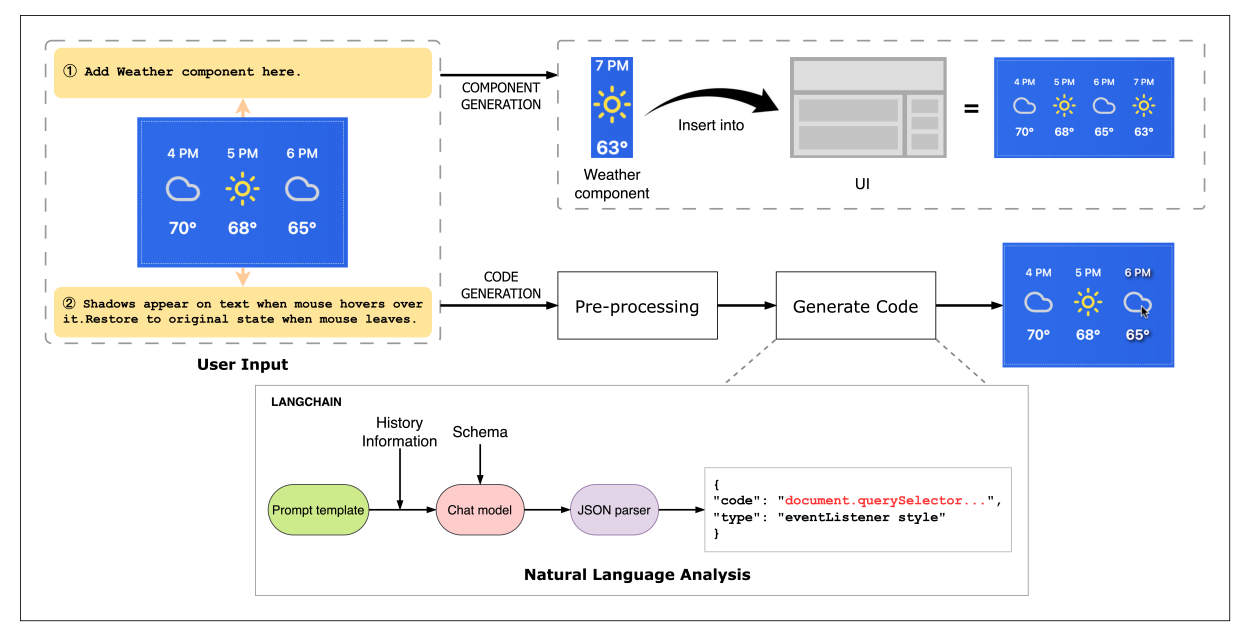The Future of Airline Technology: When AI Eliminates the Need for Software
A speculative exploration of how event-driven AI architectures could fundamentally transform airline operations and disrupt the $7 billion airline software industry

Imagine walking into an airline operations center in 2030. There are no complex computer terminals with cryptic codes. No predetermined forms or rigid workflows. No database administrators frantically updating schemas when new regulations emerge.
Instead, operations staff simply speak to their systems in natural language, describing situations as they unfold, and intelligent systems respond with exactly the information and interfaces needed for each unique situation.
This isn't science fiction.
It's a logical extrapolation of current technological trends that could fundamentally reshape how airlines operate and potentially eliminate the need for traditional airline software entirely.
The airline industry today runs on software architectures designed in the 1960s and 1970s, when computers required explicit programming for every possible scenario and data had to be rigidly structured to be useful.
But what if those fundamental assumptions are no longer true?
What if the complexity that justifies billions in annual software spending could simply disappear?
The Current State: A $7 Billion Software Dependency
The global airline industry depends on a complex ecosystem of software systems, with Global Distribution Systems (GDS) like Amadeus, Sabre, and Travelport playing a critical role. Collectively generating over $7 billion in annual revenue, these GDS platforms aggregate, standardize, and distribute structured data related to flights, schedules, fares, and availability, enabling seamless connectivity between airlines, travel agencies, and online booking channels.
This software ecosystem emerged from necessity.
Early airline reservation systems like SABRE (developed by American Airlines and IBM in the 1960s) were marvels of engineering that enabled airlines to manage inventory and bookings at unprecedented scale.
The structured data approaches they pioneered became the foundation for modern airline operations, creating an industry standard that has persisted for over half a century.
Today's airline software landscape reflects this heritage:
- Passenger Service Systems (PSS) manage customer data in predetermined schemas.
- Departure Control Systems (DCS) handle check-in and boarding through rigid workflows.
- Revenue Management Systems optimize pricing using complex algorithms that operate on structured historical data.
- Operations Control Centers rely on specialized software that displays information in formats designed decades ago.
The complexity is staggering. A simple flight booking involves dozens of systems, hundreds of data fields, and thousands of business rules encoded in database schemas.
Flight operations require coordination between crew scheduling systems, maintenance tracking databases, weather information services, air traffic control interfaces, and passenger management platforms. Each system speaks its own language, requires specialized training, and constrains innovation through predetermined structures.
But this complexity isn't inherent to airline operations, it's an artifact of technological limitations that may no longer exist.
The Theoretical Foundation: Beyond Structured Data
Recent advances in artificial intelligence, particularly Large Language Models (LLMs), suggest a radically different approach to airline software architecture. Instead of forcing operational realities into predetermined database schemas.
What if systems could understand and process the natural complexity of airline operations directly?
This concept builds on insights from AI researcher Andrej Karpathy, who described a vision of "Software 3.0" where natural language becomes the primary programming interface and AI systems handle complex reasoning tasks that previously required explicit programming.
But the implications for airlines go even deeper than Karpathy's framework suggests.
Consider the fundamental difference between how current airline systems work and how they could work in an AI-powered future:
Current Approach:
PASSENGER_RECORD {
pnr_id: "ABC123",
passenger_name: "SMITH/JOHN",
flight_segments: [
{
flight_number: "AA1234",
departure_date: "2025-07-15",
departure_time: "14:30",
seat_assignment: "12A"
}
],
special_services: ["WHEELCHAIR", "VEGETARIAN_MEAL"]
}
Future Approach:
Natural Language Passenger Record
John Smith called this morning about his upcoming trip to his daughter's wedding in Chicago. He's been dealing with mobility issues since his recent surgery and will need wheelchair assistance. He mentioned he's been vegetarian for health reasons and seemed anxious about the flight—it's his first time flying since the surgery. He's traveling on July 15th on the 2:30 PM flight and specifically requested an aisle seat for easier access.
The first example captures data. The second captures meaning, context, relationships, and the human story that drives operational decisions.
Current systems can only work with the first.
AI-powered systems could understand and act on the second.
This shift from structured data to contextual understanding could eliminate the need for predetermined schemas, complex integration layers, and rigid user interfaces that characterize current airline software. Instead of forcing airline operations into the constraints of database structures, systems could adapt to the natural complexity and variability of real-world operations.
Academic Validation: Proof This Isn't Just a Dream
This vision isn't merely speculative. Mounting academic research provides empirical support for the foundational components of this approach; event-driven architectures, natural language understanding, and intelligent UI generation.
Event-Driven Architectures: Proven at Enterprise Scale
Research published in the Journal of Systems and Software by Overeem et al. provides empirical evidence that event-based architectures can effectively replace traditional database systems in complex enterprise environments [1].

Their study of 25 engineers across 19 event sourced systems demonstrates that events can serve as the primary state representation while achieving over 90% reliability in enterprise applications.
The research reveals that event sourcing captures the full context of what happened, when it happened, and why it happened, information that is typically lost in traditional structured data approaches. For airlines, this could mean capturing the complete narrative of operational events rather than reducing them to database entries that lose critical context.
AI Data Processing: 90%+ Accuracy in Real-World Applications
Perhaps the most compelling validation comes from research by Polak and Morgan published in Nature Communications [3].
Their study demonstrates that LLMs can extract structured data from unstructured sources with remarkable accuracy, achieving "precision and recall both close to 90%" when processing natural language text to extract structured information.
This research provides direct empirical evidence that AI systems possess the sophisticated understanding necessary to process unstructured operational events and generate appropriate structured representations on demand. The authors note that LLMs demonstrate "outstanding general language abilities, including their inherent capability to perform zero-shot classification, accurate word references identification, and information retention capabilities."
These capabilities are precisely what would be required for AI-powered airline systems to function effectively, providing the intelligent processing layer that can understand operations in their natural form and generate whatever structured representations are needed for specific purposes.

Dynamic Interface Generation: From Concept to Implementation
Research on dynamic interface generation provides support for the user experience component of this vision.
Foundational work by Penner, Steinmetz, and Johnson published in AAAI proceedings established that interfaces can be "automatically designed and presented" based on user context, role, and task requirements [4].
Recent work by Zhang et al. published in ACM proceedings demonstrates that modern AI can create user interfaces through "multi-turn natural language dialogue" [5]. Their research shows that users can "control the layout and properties of UI elements through natural language commands" and "define the interaction logic of UI components" through natural language descriptions.

For airlines, this could mean the end of complex training programs for specialized software interfaces. Instead of learning cryptic codes and predetermined workflows, airline staff could interact with systems through natural language conversations that generate appropriate visual representations for each unique situation.
Envisioning the Future: Airlines Without Traditional Software
Based on these technological foundations, we can envision a radically different future for airline operations; one where traditional software systems are replaced by AI-powered platforms that understand and respond to the natural complexity of airline operations.
Flight Operations: From Systems to Conversations
Imagine a flight dispatcher arriving for their shift and simply asking their system:
"What's the situation with today's operations?"
Instead of logging into multiple systems and checking predetermined dashboards, they receive a comprehensive briefing generated specifically for current conditions:
AI Operations Briefing
Good morning. We have 247 flights scheduled today with generally favorable weather, except for potential thunderstorms affecting the Chicago hub between 2 PM and 6 PM. Flight 1234 to Denver has a mechanical issue that maintenance expects to resolve by noon, but we should consider passenger rebooking options. The crew for Flight 5678 is delayed due to their inbound connection, and we have two backup crews available. Fuel costs are elevated today due to supply constraints at three airports, so we've optimized routing to minimize impact.
The dispatcher could then engage in natural conversation:
Dispatcher: "Show me the Chicago situation in detail and give me rebooking options for passengers who might be affected."
AI System: [Generates dynamic interface showing weather patterns, affected flights, passenger connections, and alternative routing options]
The AI understands the operational context and generates exactly the information and tools needed for each unique situation.
Passenger Services: Understanding Intent, Not Just Data
Current passenger service systems force airline staff to navigate complex interfaces and translate customer needs into predetermined categories and codes. In an AI-powered future, passenger interactions could be captured and understood in their full context.
A gate agent dealing with a passenger disruption could simply describe the situation:
Real-World Passenger Service Scenario
"Mrs. Rodriguez missed her connection due to our delay. She's traveling to her father's funeral tomorrow morning and is very upset. She's on a tight budget and can't afford hotel costs. She's willing to take any routing that gets her there by 8 AM."
The AI system would understand not just the rebooking requirements, but the emotional context, financial constraints, and urgency factors that should influence the solution.
It could generate rebooking options that consider these human factors, automatically apply appropriate service recovery measures, and provide the gate agent with talking points that acknowledge the passenger's situation with appropriate empathy.
This approach transforms passenger service from data entry and rule application into genuine problem-solving that considers the full human context of each situation.
Maintenance Operations: Capturing Expertise, Not Just Procedures
Aircraft maintenance currently relies on complex computerized maintenance management systems that track work orders, parts inventory, and compliance requirements through rigid workflows. These systems capture what was done but often lose the expertise and contextual knowledge that experienced technicians possess.
In an AI-powered future, maintenance operations could capture the full narrative of aircraft condition and maintenance activities.
A technician could document their work naturally:
Maintenance Expert Knowledge Capture
"The number 2 engine was showing slight vibration on the previous flight. I found metal particles in the oil filter—not enough to ground the aircraft, but the pattern suggests early bearing wear. I've increased the inspection frequency and ordered replacement parts. The captain mentioned the vibration was most noticeable during climb, which is consistent with bearing issues under load."
This narrative approach preserves the technician's expertise and reasoning, not just the procedural steps they followed. The AI system could understand these patterns across the fleet, identify emerging trends, and provide predictive insights that help prevent problems before they become critical.
Revenue Management: Understanding Markets, Not Just Numbers
Current revenue management systems optimize pricing based on historical data and predetermined algorithms. They excel at processing large volumes of structured data but struggle to incorporate market intelligence, competitive dynamics, and external factors that experienced revenue managers understand intuitively.
An AI-powered revenue management system could incorporate natural language market intelligence:
Market Intelligence Integration
"The tech conference in Austin was cancelled, reducing demand for our Tuesday flights. However, the university announced an earlier graduation ceremony, which should increase weekend traffic. Our competitor just announced a route suspension that opens up corporate travel opportunities. The local tourism board is launching a summer campaign that could affect leisure demand patterns."
The AI system could understand these market dynamics and adjust pricing strategies accordingly, while explaining its reasoning in terms that revenue managers can evaluate and refine.
This approach combines the processing power of automated systems with the market understanding that human experts provide.
The Transformation Timeline: A Speculative Roadmap
Timeline Overview
The transformation to AI-powered airline systems will likely occur in three phases:
- Phase 1 (2025-2030): Experimental Implementation
- Phase 2 (2030-2035): Competitive Pressure
- Phase 3 (2035-2040): Industry Transformation
Phase 1: Experimental Implementation (2025-2030)
The first phase would involve experimental implementations by technology-forward airlines and startups willing to challenge established approaches. These experiments would likely focus on specific use cases where current systems are particularly painful or limiting.
Early implementations might include AI-powered customer service interfaces that can understand complex passenger requests, operational planning tools that process natural language situation reports, or maintenance systems that capture technician expertise in narrative form.
The key challenge in this phase would be proving that AI-powered approaches can match the reliability and compliance requirements of current systems while providing superior user experiences and operational efficiency.
Phase 2: Competitive Pressure (2030-2035)
Market Dynamics
Early adopters will demonstrate clear advantages:
- Superior operational efficiency
- Higher customer satisfaction scores
- Reduced operational costs
- Faster response to market changes
- Better employee satisfaction due to improved tools
The second phase would be driven by competitive pressure as early adopters demonstrate clear advantages in operational efficiency, customer satisfaction, and cost structure. Airlines that initially dismissed AI-powered approaches would be forced to respond as competitors gain market share through superior capabilities.
This phase would likely see the emergence of AI-native companies that are built from the ground up around event-driven architectures. These companies would have significant advantages over incumbents trying to adapt legacy systems to new paradigms.
The airline industry could see new entrants offering AI-powered booking and operational management services that compete directly with established GDS providers. If these services demonstrate clear advantages in user experience and cost structure, adoption could accelerate rapidly.
Phase 3: Industry Transformation (2035-2040)
The third phase would involve fundamental industry transformation as AI-powered architectures become the dominant paradigm for new system development. Legacy systems would increasingly be seen as technical debt that constrains innovation and competitiveness.
This phase would likely involve significant consolidation as companies that successfully navigate the transformation acquire those that don't. The competitive advantages that protected incumbent providers would erode as AI technologies eliminate traditional barriers to entry and switching costs.
The airline industry could see fundamental restructuring of the GDS oligopoly as new AI-powered platforms capture significant market share and force traditional providers to transform or exit the market.
Challenges and Limitations: Why This Future Isn't Guaranteed
Key Challenges
- Regulatory and safety concerns require extensive validation
- Technical reliability must match or exceed current systems
- Organizational resistance to fundamental change
- Market incumbents will defend their positions
- Customer inertia favors status quo
While the technological foundations for AI-powered airline systems exist, significant challenges could slow or prevent this transformation.
Regulatory and Safety Concerns
The airline industry operates under strict regulatory oversight that prioritizes safety and reliability above innovation. Aviation authorities would likely be cautious about approving AI-powered systems until they have extensive evidence of safety and reliability.
The black-box nature of some AI technologies could create additional regulatory concerns, as authorities require explainable decision-making processes for safety-critical applications. Developing AI approaches that provide the transparency and auditability that regulators require would be essential for adoption in airline operations.
Technical Reliability Requirements
Critical Requirements
Airlines operate 24/7 with:
- Zero tolerance for system outages
- Peak load handling requirements
- Real-time processing needs
- Consistent response times
- Full audit trail capabilities
Airlines operate 24/7 with minimal tolerance for system failures.
Current airline software systems, while complex and difficult to modify, have proven track records of reliability that AI-powered alternatives would need to match or exceed.
The performance and scalability requirements of airline operations are substantial. AI systems would need to demonstrate that they can handle peak booking loads, process real-time operational changes, and maintain consistent response times under all conditions.
Organizational Resistance
The airline industry has substantial investments in current systems and personnel trained to use them. The switching costs and risks associated with fundamental system changes create strong incentives to maintain existing approaches.
Personnel with deep expertise in current systems might resist changes that could make their skills obsolete. Database administrators, system architects, and operations specialists who have built careers around managing structured data complexity might view AI-powered alternatives as threats to their professional relevance.
Market Incumbent Response
Companies like Amadeus, Sabre, and Travelport have billions in revenue at stake and would not surrender market positions without significant resistance. They could respond with competitive pricing, enhanced features, or strategic partnerships that make migration to AI-powered alternatives more difficult.
Customer inertia would also slow adoption, as airlines are reluctant to change systems that work adequately even if better alternatives are available. The switching costs and risks associated with fundamental system changes create strong incentives to maintain status quo approaches.
Strategic Implications: Preparing for Possible Futures
Strategic Considerations by Stakeholder
Airlines:
- Evaluate AI technologies through pilot projects
- Develop partnerships with AI providers
- Plan for different adoption scenarios
Software Providers:
- Balance existing revenue protection with innovation
- Invest in AI research and development
- Focus on airline-specific AI applications
New Entrants:
- Focus on demonstrating reliability and compliance
- Navigate complex regulatory requirements
- Build industry-specific expertise
Whether or not the AI-powered transformation occurs as envisioned, airline industry participants should consider the strategic implications of these possibilities.
For Airlines: Evaluating Options
Airlines should begin evaluating AI technologies and their potential applications to airline operations.
This evaluation should include pilot projects that test AI capabilities in low-risk environments and assess their potential for broader application.
The evaluation should also include scenario planning for different rates of AI adoption and different competitive responses. Airlines should develop strategies for both leading and following AI adoption, depending on their risk tolerance and competitive positioning.
Strategic partnerships with AI technology providers could provide access to cutting-edge capabilities without requiring massive internal development investments. These partnerships should be structured to provide learning opportunities while maintaining strategic flexibility.
For Software Providers: Transformation or Obsolescence
Current airline software providers face the most significant strategic challenges from potential AI disruption. They must balance protecting existing revenue streams with investing in potentially disruptive technologies.
Investment in AI research and development becomes critical for maintaining competitive relevance. Software providers should establish dedicated AI teams and partnerships with leading AI research organizations to ensure access to cutting-edge capabilities.
The investment should focus on airline industry-specific applications rather than general AI development, leveraging existing domain expertise to create differentiated solutions that AI-native competitors cannot easily replicate.
For New Entrants: Opportunity and Risk
The potential for AI to eliminate traditional barriers to entry creates opportunities for new companies to challenge established providers. However, these opportunities come with significant risks and challenges.
New entrants would need to demonstrate that AI-powered approaches can meet the reliability, security, and compliance requirements of airline operations. This demonstration would require substantial investment and expertise in both AI technologies and airline industry requirements.
The regulatory approval process for new airline software systems is complex and time-consuming. New entrants would need to navigate these requirements while competing with established providers that have existing regulatory relationships and approval processes.
Conclusion: A Future Worth Considering
Key Takeaway
The question isn't whether AI will transform airline technology, but how quickly and in what ways. The organizations that engage with these possibilities thoughtfully and strategically will help shape that transformation rather than being shaped by it.
The vision of AI-powered airline systems that eliminate the need for traditional software represents a fascinating thought experiment about the future of technology in aviation. While significant challenges and uncertainties remain, the technological foundations exist today, and the potential benefits are compelling.
Whether this transformation occurs as rapidly and completely as envisioned, or whether it evolves more gradually through hybrid approaches that combine AI capabilities with existing systems, the airline industry will undoubtedly be shaped by advancing AI technologies in the coming decade.
The companies and organizations that begin exploring these possibilities today; through research, experimentation, and strategic planning will be better positioned to navigate whatever future emerges. Those that dismiss these possibilities entirely may find themselves unprepared for changes that could reshape their industry. The future of airline technology may not require eliminating software entirely, but it will certainly require reimagining how software understands and responds to the complex, dynamic, and fundamentally human nature of airline operations.
The question isn't whether AI will transform airline technology, but how quickly and in what ways.
The organizations that engage with these possibilities thoughtfully and strategically will help shape that transformation rather than being shaped by it.
References
[1] Overeem, M., Spoor, M., Jansen, S., & Brinkkemper, S. (2021). An empirical characterization of event sourced systems and their schema evolution — Lessons from industry. Journal of Systems and Software, 178, 110970. https://doi.org/10.1016/j.jss.2021.110970
[3] Polak, M. P., & Morgan, D. (2024). Extracting accurate materials data from research papers with conversational language models and prompt engineering. Nature Communications, 15, 1569. https://doi.org/10.1038/s41467-024-45914-8
[4] Penner, R. R., Steinmetz, E. S., & Johnson, C. L. (2000). Adaptive User Interfaces through Dynamic Design Automation. In Proceedings of the AAAI Conference on Artificial Intelligence, 17. https://aaai.org/papers/01127-AAAI00-200-adaptive-user-interfaces-through-dynamic-design-automation/
[5] Zhang, T., Peiguo, F., Liu, J., Zhang, Y., & Chen, X. (2024). NLDesign: A UI Design Tool for Natural Language Interfaces. In ACM-TURC '24: Proceedings of the ACM Turing Award Celebration Conference - China 2024 (pp. 153-158).